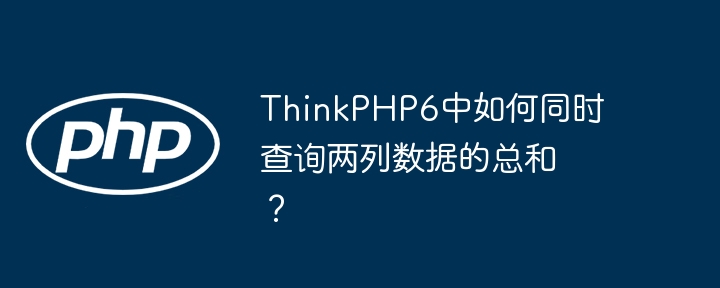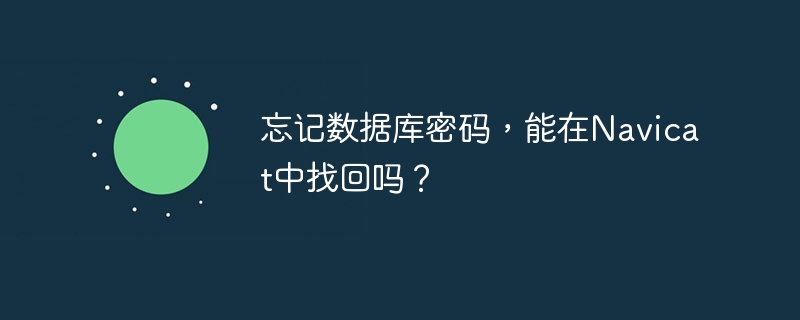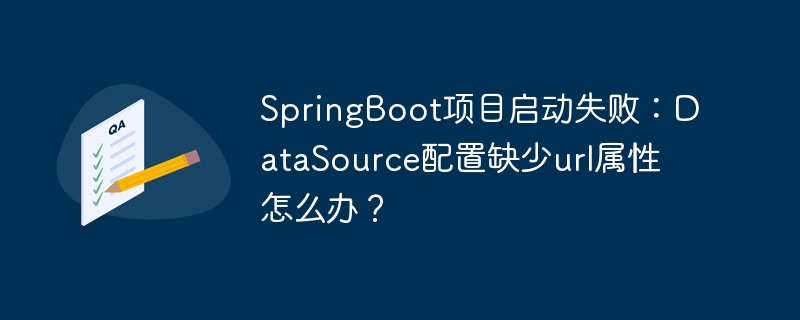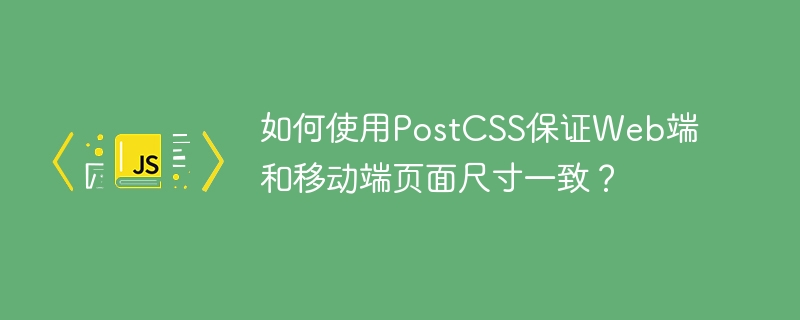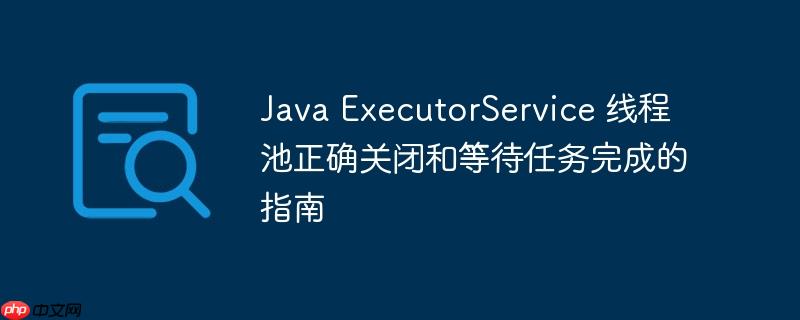
本文旨在解决 Java ExecutorService 线程池在使用 shutdown() 和 awaitTermination() 方法时,无法等待所有任务完成的问题。通过分析任务提交和线程执行的流程,本文提供了两种解决方案,确保线程池在所有任务执行完毕后才关闭,避免数据不一致等问题。
在使用 Java 的 ExecutorService 管理并发任务时,正确关闭线程池并等待所有任务完成至关重要。如果 shutdown() 方法在子任务完成前被调用,可能会导致数据丢失或不一致。本文将探讨如何确保线程池在所有任务(包括由其他任务提交的子任务)完成后才关闭。
问题描述
假设我们有一个主线程,它提交了一些任务(例如 t0, t1, t2, t3)到 ExecutorService。其中,t0 又可能提交了其他的任务(例如 t4, t5)到同一个 ExecutorService。如果在 t0, t1, t2, t3 完成后立即调用 shutdown() 和 awaitTermination(),而 t4 和 t5 还在执行,那么后续的文件写入操作可能会在 t4 和 t5 完成之前执行,导致数据错误。
解决方案
问题的关键在于确保在调用 shutdown() 之前,所有任务(包括子任务)都已经被提交到线程池,并且主线程知道所有任务都已经完成。以下是两种解决方案:
立即学习“Java免费学习笔记(深入)”;
方案一:等待任务完成再关闭线程池
如果 t0 是通过 execService.submit() 提交的任务,可以使用 Future 对象来等待 t0 完成,然后再关闭线程池。
import java.util.concurrent.ExecutorService; import java.util.concurrent.Executors; import java.util.concurrent.Future; import java.util.concurrent.TimeUnit; public class ExecutorServiceShutdownExample { public static void main(String[] args) throws Exception { ExecutorService execService = Executors.newFixedThreadPool(5); // 提交 t0 任务 Future<?> t0fut = execService.submit(() -> { System.out.println("t0 started"); // 模拟 t0 提交 t4 和 t5 任务 execService.submit(() -> System.out.println("t4 started and finished")); execService.submit(() -> System.out.println("t5 started and finished")); System.out.println("t0 finished"); }); // 提交其他任务 t1, t2, t3 execService.submit(() -> System.out.println("t1 started and finished")); execService.submit(() -> System.out.println("t2 started and finished")); execService.submit(() -> System.out.println("t3 started and finished")); // 等待 t0 完成 t0fut.get(); // 关闭线程池 execService.shutdown(); execService.awaitTermination(60, TimeUnit.MINUTES); System.out.println("All tasks finished, writing to file."); } }
代码解释:
- t0fut = execService.submit(t0): 提交 t0 任务并获取其对应的 Future 对象。
- t0fut.get(): 阻塞当前线程,直到 t0 任务完成。由于 t4 和 t5 是在 t0 内部提交的,因此在 t0 完成之前,t4 和 t5 肯定已经被提交到线程池。
- execService.shutdown(): 在 t0 完成后调用 shutdown(),此时线程池会等待所有已提交的任务(包括 t4 和 t5)完成。
- execService.awaitTermination(60, TimeUnit.MINUTES): 等待线程池中的所有任务完成,最多等待 60 分钟。
方案二:等待线程结束再关闭线程池
如果 t0 是一个单独的线程,而不是通过 submit() 提交的任务,可以使用 t0.join() 来等待 t0 线程结束,然后再关闭线程池。
import java.util.concurrent.ExecutorService; import java.util.concurrent.Executors; import java.util.concurrent.TimeUnit; public class ExecutorServiceShutdownExample2 { public static void main(String[] args) throws Exception { ExecutorService execService = Executors.newFixedThreadPool(5); // 创建 t0 线程 Thread t0 = new Thread(() -> { System.out.println("t0 started"); // 模拟 t0 提交 t4 和 t5 任务 execService.submit(() -> System.out.println("t4 started and finished")); execService.submit(() -> System.out.println("t5 started and finished")); System.out.println("t0 finished"); }); // 启动 t0 线程 t0.start(); // 提交其他任务 t1, t2, t3 execService.submit(() -> System.out.println("t1 started and finished")); execService.submit(() -> System.out.println("t2 started and finished")); execService.submit(() -> System.out.println("t3 started and finished")); // 等待 t0 线程结束 t0.join(); // 关闭线程池 execService.shutdown(); execService.awaitTermination(60, TimeUnit.MINUTES); System.out.println("All tasks finished, writing to file."); } }
代码解释:
- t0.start(): 启动 t0 线程。
- t0.join(): 阻塞当前线程,直到 t0 线程结束。同样,由于 t4 和 t5 是在 t0 线程内部提交的,因此在 t0 线程结束之前,t4 和 t5 肯定已经被提交到线程池。
- execService.shutdown(): 在 t0 线程结束后调用 shutdown(),此时线程池会等待所有已提交的任务(包括 t4 和 t5)完成。
- execService.awaitTermination(60, TimeUnit.MINUTES): 等待线程池中的所有任务完成,最多等待 60 分钟。
注意事项
- 确保所有任务都提交到同一个 ExecutorService 实例。
- 正确处理 awaitTermination() 方法可能抛出的 InterruptedException 异常。
- 根据实际情况调整 awaitTermination() 方法的超时时间。
总结
正确关闭 ExecutorService 线程池并等待所有任务完成,是保证并发程序正确性的关键。通过等待父任务或线程完成后再调用 shutdown() 方法,可以确保所有子任务都被提交到线程池,并且在线程池关闭之前完成执行,从而避免数据丢失和不一致的问题。选择哪种方案取决于任务的提交方式,如果任务是通过 submit() 提交的,使用 Future.get() 等待;如果任务是单独的线程,使用 Thread.join() 等待。








